Ear-piercing ceremony
Myanmar boys are novitiated in the Shinbyu ceremony whereas the girls also have a ceremony in which ear lobes are pierced so they can wear ear rings when they come of age, also it represents the girls going into womanhood. Unlike the novitiation ceremony, this is more of a social event than religious event unlike for the Myanmar boys.
Traditionally, the girls have to wear costumes as those of princesses from the Myanmar olden days and for the piercing of ears, needles are use to pierce the ear lobes and these needles are made from pure gold. Only the women who are experienced are allowed to pierce the ears of the young girls but even then, this is of course still rather painful process. But now in the modern days, piercing guns are mostly used. In Myanmar, this is regarded as one of the most important ritual for a young female’s life apart from their wedding.
The ear-piercing ceremony normally coincides with the boys’ novitiation rather than being held on its own. The girl, usually a sister of the novices-to-be, can have her ears pierced on her own or in a group depending on the situation. On the day of the novitiation ceremony, the girl’s ritual is held before the novitiation so they can then join the procession.
Shinbyu ceremony
Shinpyu is a term used to describe a celebrating the ordination of their young Myanmar male (under the age of 20) into Buddhist order of the Sangha. For the preparation, during the mornings of Shinbyu, festival begins with the young boy cleansing oneself with a long bath then puts ritual make-up (thanakha) on the boy’s face. Thanakha is a yellowish-white cosmetic paste made from ground bark. The boy is then dressed in costumes as beautiful as those of the kings of old Myanmar. Once he is dressed, he is not allowed to walk so he is carried by their parents to a beautifully decorated horse, which only the young boy rides on. With traditional Myanmar music playing loudly, their ride to the temple begins. Followed by the young boy and their parents are parades of people carrying offerings for the monks.
At the temple, a monk shaves the head of the boy and they are then dressed in red or yellowish coloured monk’s robes. Now they repeat after the monk sayings in Pali. Pali is the Indian language of the accident Buddhist texts. The boy is to live at the temple for a week or more to learn the ways of Buddhism.
Myanmar’s Traditional Clothing
As Myanmar is a large country with diverse ethnic minorities in different regions, the people from each ethnic group have their own traditional clothing which represents their cultural and social status. The style of clothing is determined by the people of each state’s histories of their country, traditions and also their climate conditions.
Bamar – Bamar men wear a collarless jacket over a mandarin collared shirt, sometimes men wears hats called “gaung baung” for special occasions. For the bottom, instead of pants, they were skirt-like angle-length patterns of checks, plaids or stripes called “longyi”. Bamar woman wears a blouse buttoned at the front, called “yinzi” or the side folded blouse called “yinbon”. For the bottom, they wear longyi as well but they can be any sort of pattern or colour.
Mons – Mon longyi is in small checks on red, bordered with horizontal stripes at the middle.
Karens – Karens’ traditional longyi are similar to Mon peoples’, they are also solid reds bordered with horizontal stripes at the middle.
Chins – Their longyi’s are similar to Bamar peoples’.
Kachins – Their peoples’ longyi is in checks of black, green and deep purple.
Rakhines – Rakine longyi patterns fracture a thick, high- relief weave in light, reflective grays and blues.
Shans – Instead of longyi, Shan men wears loose trousers. Shan trousers have light brown, brown, grey or terracotta colour.
Kayahs – Kayah men also wears trousers, but the trousers are only in black.
Myanmar Language
Myanmar is a country of many languages. There are over one hundred languages and dialects spoken by the many peoples of Myanmar. The national language is Burmese (Myanmar language) and it spoken by majority of the population. Many people from other statues use their own languages at home and they use Burmese outside. The schools teach both Burmese and English, which is Burma’s official second language. In fact, most people are able to understand (speak and read) English to support two daily English newspapers in Rangoon (the main business center of Myanmar).
In the Burmese language, there are 33 consonants and 12 basic vowels. The 12 basic vowels can be extended with the use of two tone marks to 21 vowels. For Myanmar language, it is important to learn the use of tones. There are four tones and these are Creaky, which is the short and falling tone that ends with a weak closure of the glottis, Low tone, this is the long and level that may fall or rise at the end, a High tone, that is a long tone that starts high then falls slowly from the high to low pitch and lastly, we have the Stopped tone, it is a very short, high tone ending in a glottal stop.
The image below shows the Myanmar consonants.
Burma (Myanmar)
Burma, which is now known as Myanmar is bordered by China, Thailand, Laos and Bangladesh. Burma is the 2nd largest country in Southeast Asia with the current population of 55 million people. It consists of 7 states with 7 regions formerly called divisions.
With Bamar being the main state, the seven other states includes Karen, Shan, Rakhine, Kachin, Mon, Chin and Kayah and the seven divisions being, Thaninthayi, Yangon, Ayeyarwaddy, Bago, Magwe, Mandalay, and Sagaing.
Shans – Shans are ethnically related to the Thai people and they are the second largest population in Myanmar.
Mons – Mon people are one of Myanmar’s oldest civilizations. They established themselves as the most cultured people in South-east Asia at that time, as their art and architecture clearly show.
Karens – There are more than 2 million Karens in Myanmar and they were among the earliest inhabitants to descend from China down the Irrawaddy River into Burma.
Chins – they are a Tibeto-Burman people who inhabit the great mountain chain running up western Burman into Mizoram in north-east India.
Kayahs – Kayahs are one of the smallest national groups. Their name became well known due to their brightly coloured head-clothes or shawls that the territory gained its historic name of Karenni which today applies to all the Karen sub-groups in the state.
Kachins – Kachin people lives in the northern part of Shan state.
Rakhines – With Rakhine people, like the Burmese nationals, the Rakhines use Burmese as their national language whereas the people from the other states use their own language.
Myanmar country is well known for their natural gem stones. For example, mining from the Mandalay division, they have found some of the finest rubies the world has seen and beautiful sapphires, in Thaninthayi division the biggest pearl was discovered, and in the Kachin state, the largest jade dyke was found and many other precious stones are found in Myanmar. While gem stones are largely found in Myanmar, other sources such as copper, iron, bronze are found from the country.
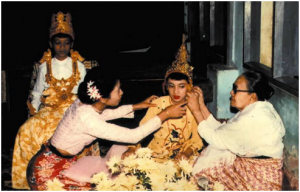
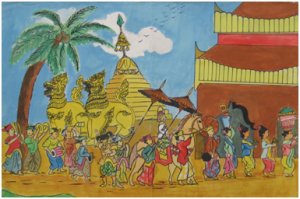
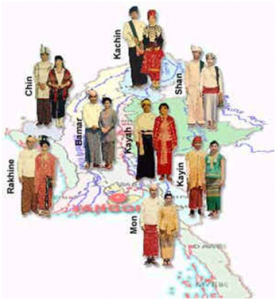
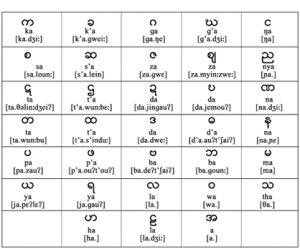
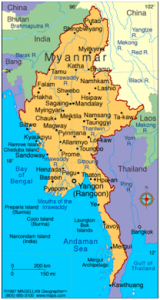



Latest Comments